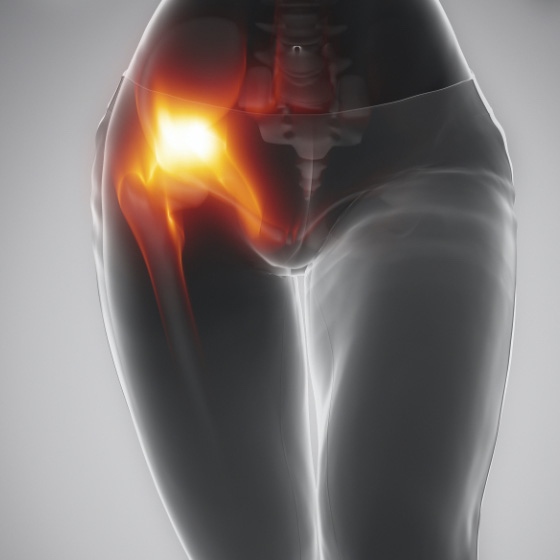What is the "Anterior Minimally Invasive Surgery" approach ?
This means the minimally invasive surgical technique via the anterior hip joint approach.
So this method describes a special surgical procedure and a special but natural access route in the surgical therapy of hip joint arthrosis.
In this technique, the surgeon uses an existing muscle interval (a muscle gap) to reach the hip joint and reduces the risk of injury to muscles, tendons and nerves.
The principle of this surgical method is to restore the natural function of the hip while preserving the anatomical structures (muscles, ligaments, etc.).
The hip joint is accessed from the front using special instruments, which allows the prosthesis to be inserted in a muscle-sparing manner and the biomechanics to be reconstructed exactly. This guarantees less postoperative pain and a faster recovery and thus a quick return to the desired daily activities. Sporting activities can also be performed again after a short time.

How does this surgical method work?
A small incision (<10cm) on the front of the thigh is used to access the hip joint.
After opening the so-called fascia, the muscle cords and nerves can then be easily held aside. Notching or detaching the muscle attachments is not necessary. The hip joint capsule is then exposed and opened.
After mechanical removal of the femoral head, the artificial hip joint can then be implanted using special, minimally invasive surgical tools. The so-called short-shaft prostheses, which are implanted in a bone-saving, cement-free technique, are particularly suitable for this purpose.
After intraoperative X-ray control and final movement and stability testing by the surgeon, the hip joint capsule is closed. Afterwards, the muscles can close around the joint again uninjured, like a curtain.
What are the advantages of this procedure?
The sparing of muscles, tendons, nerves, blood vessels and bone substance leads to:
and also smaller scars are possible with this technique than with conventional hip operations.
Which implants are used?
So-called short-shaft prostheses are used. Their advantage is less bone loss in the thigh compared to "normal" prosthesis stems. These implants are made of pure titanium.
Specially developed "ceramic femoral heads" are used for the moving parts of the hip joint prosthesis. The insert of the hip joint stem is usually made of highly cross-linked polyethylene. These are inserted using the "cementless technique" and enable the artificial hip joint to be immediately and fully loaded.
Necessary replacement operations due to possible loosening of the prosthesis are also easier to perform as a result.
